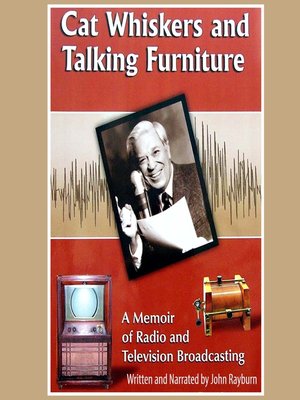Cat Whiskers and Talking Furniture
audiobook (Unabridged) ∣ A Memoir of Radio and Television Broadcasting
By John Rayburn

Sign up to save your library
With an OverDrive account, you can save your favorite libraries for at-a-glance information about availability. Find out more about OverDrive accounts.
Find this title in Libby, the library reading app by OverDrive.



Search for a digital library with this title
Title found at these libraries:
| Loading... |
The so-called Golden Age of Radio lasted little more than a quarter century from approximately 1926 to 1952–54. This is what it was like:
"Of all the forms of theater, radio drama commanded the most effective stage. No medium—not theater, not film, not television—had more sheer space in which to achieve the basic goal of drama, telling a story. Theater is bounded by the bare boards and the footlights and the flats, film by the white screen, and television by the comparatively tiny tube. But radio ... radio played itself out in boundless space ... the listener's mind ... your mind. We in radio always called it the theater of imagination. We proudly traced our lineage back to the primitive campfire and the tribal storytellers as the passers-on of legend, heroic adventure, mysteries of nature. They told their stories orally and so did we. We did not show, we told you. We made you believe everything because it was happening before your mind's eye. The basic appeal of radio drama was that you had to listen if you wanted to follow it. It wasn't enough to merely hear it. You had to listen. The word listen implies a conscious effort to pay attention, to participate. Senses were activated, the curiosity was sparked, the imagination was fired, and the listener found himself participating. He was a collaborator. In his brain he matched a face and a body to the voice. In his mind he saw the action. And that was the basic difference between radio and every other visual medium. A good movie, a fine stage play, a television drama, excellent ballet ... all those required an appreciative audience, but only radio called for a creative audience, a listener who really worked with the writer, the director, the actors, and technicians to give completeness to the creative process."






